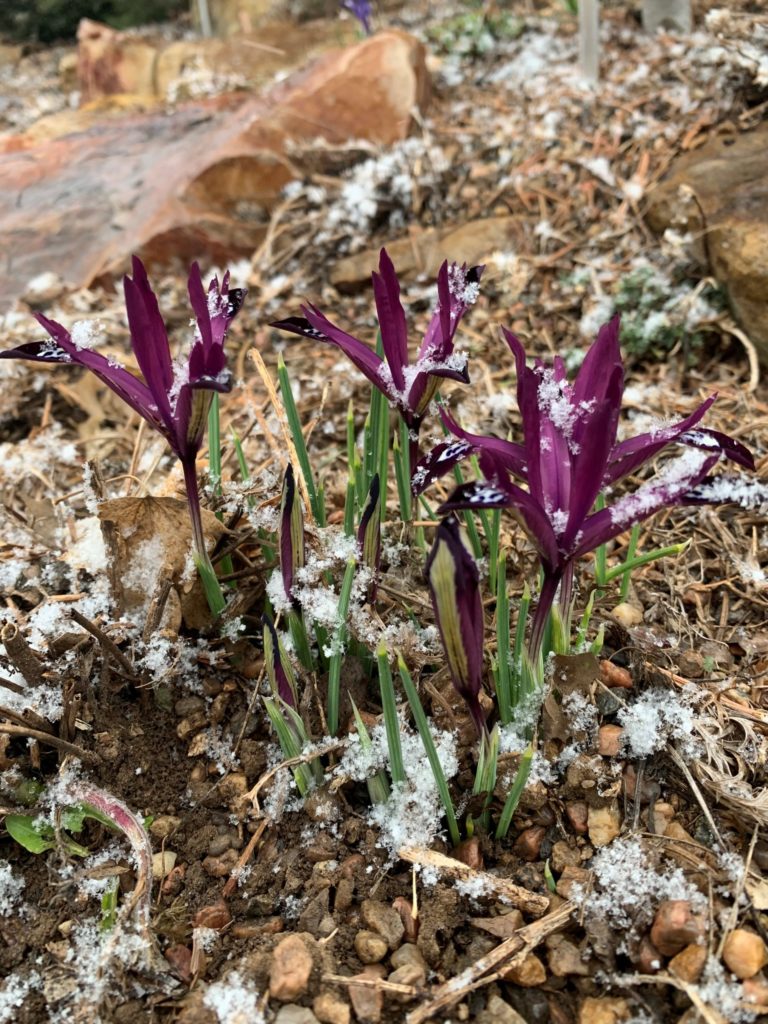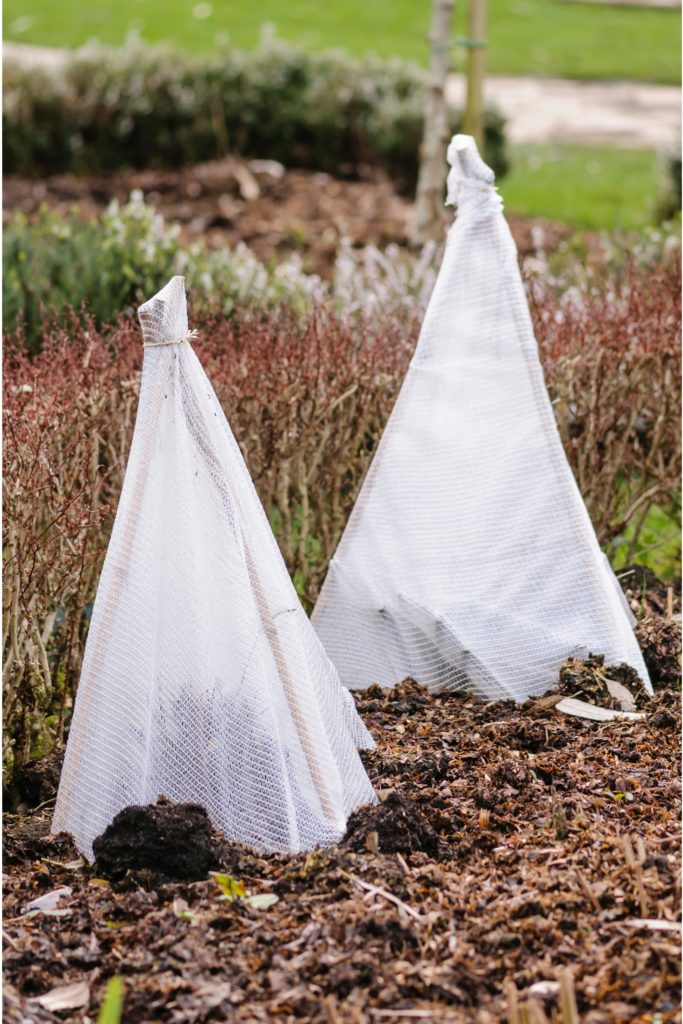
By The Gardens on Spring Creek Horticulture Team
With the uncertainty of Colorado weather, understanding how to help your garden thrive in the early spring is important – and not always the best lesson to learn through experience. So, the horticulture team at The Gardens on Spring Creek has shared their best tips and tricks for protecting your early spring vegetation.

For the most part, the key is to let your plants be. Snow is largely trapped pockets of air that insulate well. The most dangerous weather to your garden is an exposed, hard freeze without any precipitation to protect your plants. While most classic garden perennials like peonies, tall border phlox and clematis are fairly hardy, there are steps you can take to protect your new growth.
- Water Wisely: If you know that inclement weather is on its way, water your plants thoroughly a few days before. Cold stress and drought stress damage plants on a cellular level in a similar way, so by watering you can avoid extra damage. Additionally, well-hydrated soil resists temperature fluctuations, so watering can also protect fine root systems. Keep in mind that watering should be done only be done when the weather is above 50 degrees.
- Cover It Up: Adding mulch – wood, leaves or straw – can add a layer of protection against inclement weather.

You can also consider using frost cloth or blankets to cover vegetation you want to protect. These materials can provide varying degrees of protection, depending on weight. When covering plants, create a sphere of protection without actually touching the plant. You can use metal hoops, stakes or other materials to drape your cloth without making contact.
- Hands Off: If plants are frozen, don’t touch them – let them thaw. While they may look like they need help, they can handle a certain amount of stress. Touching frozen plants can cause additional damage and even plant cells to rupture. This goes for turf as well. Avoid a creating a path of dead grass by not walking on a frozen lawn.
When it comes to weather tolerance, plant selection is your best protection for future plantings. Here are some things to consider as you make any changes to your landscape:
- Check Your Zone: Match your plants’ hardiness to your site. The Gardens on Spring Creek sit at a USDA Hardiness Zone 5b, but you might be in a different zone or microclimate. When shopping for perennials, grasses and shrubs, be sure to check for hardiness rating.
- Stagger Bloom Time: While this may not help your current garden, it is a good tip for future planting. Planting vegetation with varying bloom times can help your landscape look its best even if you lose a portion of your buds to snow or hail.
- Plant in Cooler Areas: Position early-blooming plants in cooler spots in your garden – along the north side or east, for example. Planting in warm spots, like against a brick wall or facing south will cause bulbs and perennials to pop early, leaving them exposed to early spring weather.
Support Northern Colorado Journalism
Show your support for North Forty News by helping us produce more content. It's a kind and simple gesture that will help us continue to bring more content to you.
BONUS - Donors get a link in their receipt to sign up for our once-per-week instant text messaging alert. Get your e-copy of North Forty News the moment it is released!
Click to Donate
